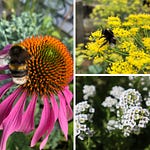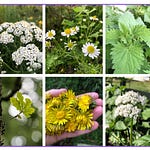First up - apologies for the title!
I recorded three attempts at a morning brain dump, and then decided to just keep this fourth attempt as a genuine expression of how my thoughts work at the start of the day.
I’m feeling the pressure to do a formal write-up of the quick return composting method with all the scientific analysis that my compost colleagues are demanding from me.
We all have different questions, and I’d be happier reading other people’s research than telling them what to do.
My questions are different to yours, so how can my research possibly answer your questions?
This week I’ve been gazing at selfheal flowers with curiosity, and if I had spare hours to do a deep dive on anything, it would be studying this plant:
Where
fits:for biodynamic growers, if you were for some reason uplifted from your land and plonked somewhere with no internet, no books, no calendars, no phones, what would it look like for you to be a ‘biodynamic’ grower? I’m assuming in that situation, many of my biodynamic colleagues would put their hands up to be involved in food production and working with the soil, and to do so with all intuitive capacities switched on. Can we activate that mode of awareness right now, in our current homes?
here in Auckland, New Zealand, I’m gently suggesting that even though there is a highly competent (and very expensive) food collection service in place, that we should be mindful that a flood, earthquake or other civil emergency could see us needing to compost locally again - let’s not stop learning to make compost just because our rates are paying for an easy alternative.
As is often the case, I’d like to invite you to try something new this week. This time, it’s indoor composting. There’s a webinar here that I did for the Aotearoa Compoters Network that shows a few ideas. Funny to look back on this and see my tentative suggestion that the floral compost activator may be perfect — I was in testing mode at the time, not ready to back it 100%.














Share this post